Drones as Facilitators of Access in Hard-to-Reach Areas
Drones as Facilitators of Access in Hard-to-Reach Areas
Jul 24, 2025
Introduction
Some areas are difficult to access, particularly mountains, dense forests, and isolated regions. However, it is sometimes essential to access or build in these remote spaces, whether to install energy infrastructure, or to carry out medical deliveries.
The logistical challenges are numerous. With the development of drones in recent years, it is now possible to use these devices to move heavy goods and facilitate construction in difficult environments.
Moving Heavy Goods
Traditionally, transporting construction materials to remote sites required the use of expensive all-terrain vehicles or helicopters. These methods had significant limitations in terms of capacity and accessibility, making projects in these areas particularly complex and costly.
However, drones offer a new, robust, and powerful perspective, now allowing the transportation of significant loads. This emerging technology has transformed our approach to transport in challenging environments, offering a more flexible and adaptable solution.
In Denmark, for example, drones are already being used to transport equipment to wind farms, perfectly illustrating this technological advancement. These drones can navigate complex environments, avoid natural obstacles, and deliver loads with remarkable precision.
At Digital Eagle, our drones, capable of carrying up to 50 kg, open new perspectives for transporting construction materials in previously inaccessible environments.
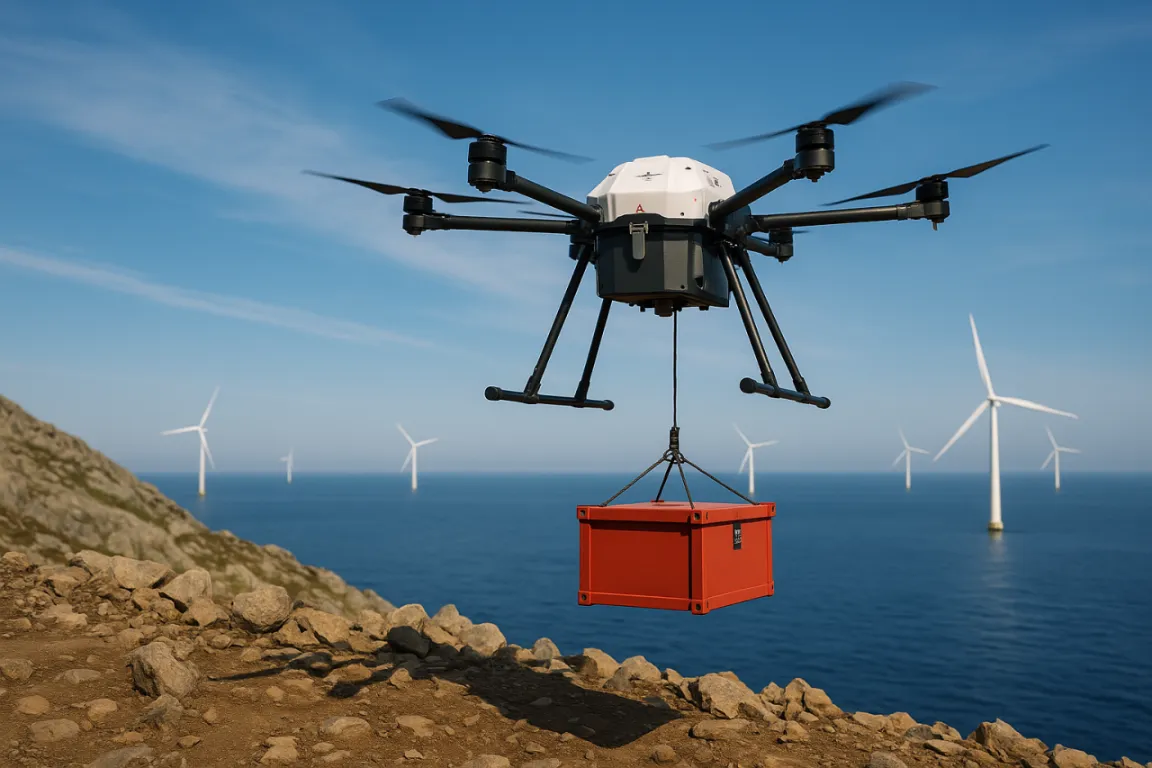
At Lower Cost and More Simply
Using helicopters to transport heavy loads in remote areas has several major drawbacks. Not only are helicopters expensive to operate, but their size and need for space to take off and land often make them unsuitable for certain mountainous or densely forested areas.
With the use of drones, their compact design, robustness, and ease of use make them ideal for transporting heavy loads. Drones can be deployed quickly and piloted with minimal training, thus reducing costs and logistical complications. Their ability to take off and land vertically allows access to areas where helicopters cannot operate.
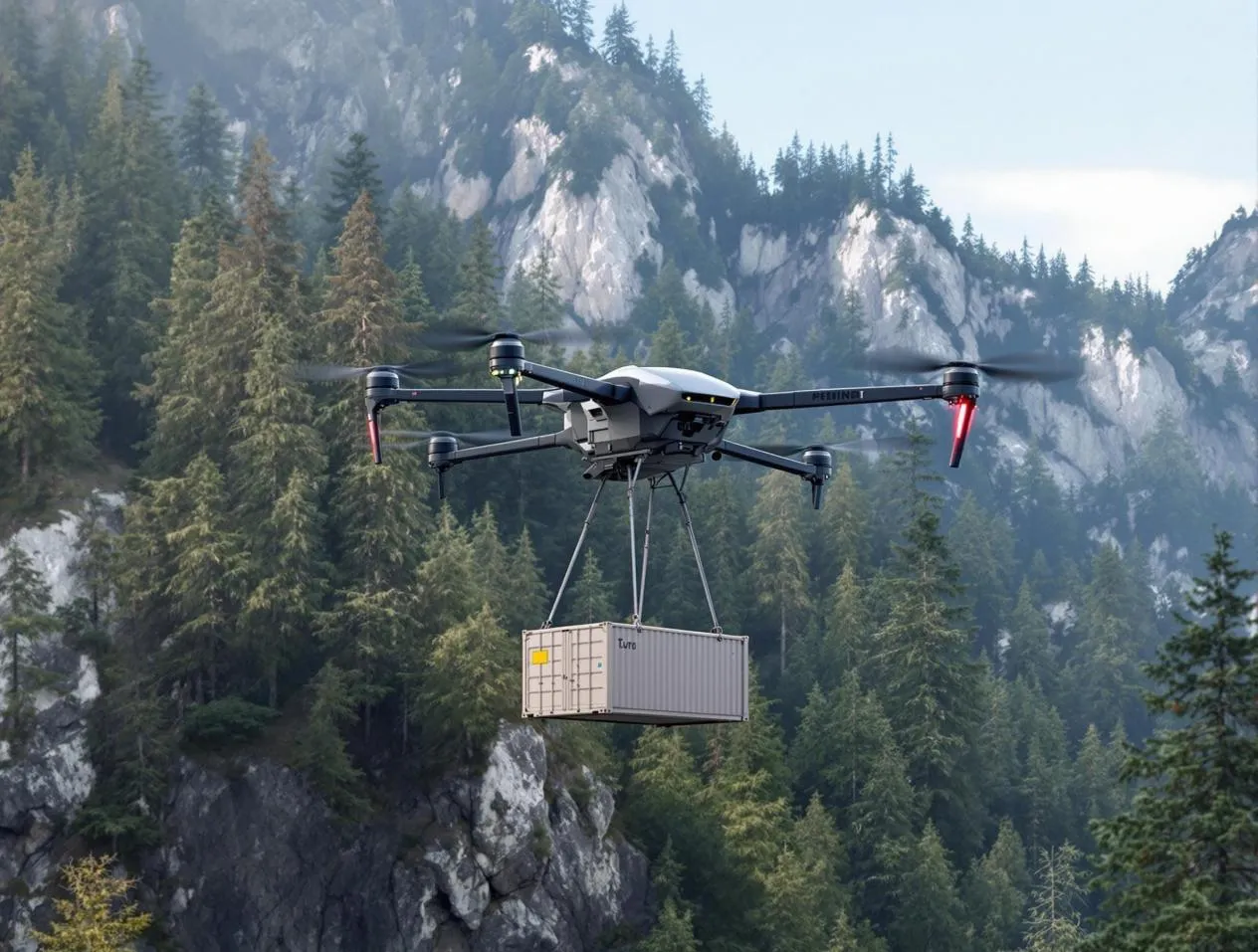
Promoting Ecology in Rural Areas
The development of ecology in rural areas is a major issue for many countries. The installation of photovoltaic panels is a key solution to provide clean and renewable energy to isolated communities. A photovoltaic panel weighs on average between 25 and 30 kg, which is well within the load capacity of our drones.
In China, where there is rapid development of photovoltaic installations in mountainous regions, the use of drones could be an ideal solution.
Drones can facilitate the transport and installation of these panels, thereby reducing the carbon footprint associated with traditional transport methods. This not only facilitates the installation of green technologies but also promotes sustainable development in rural areas.
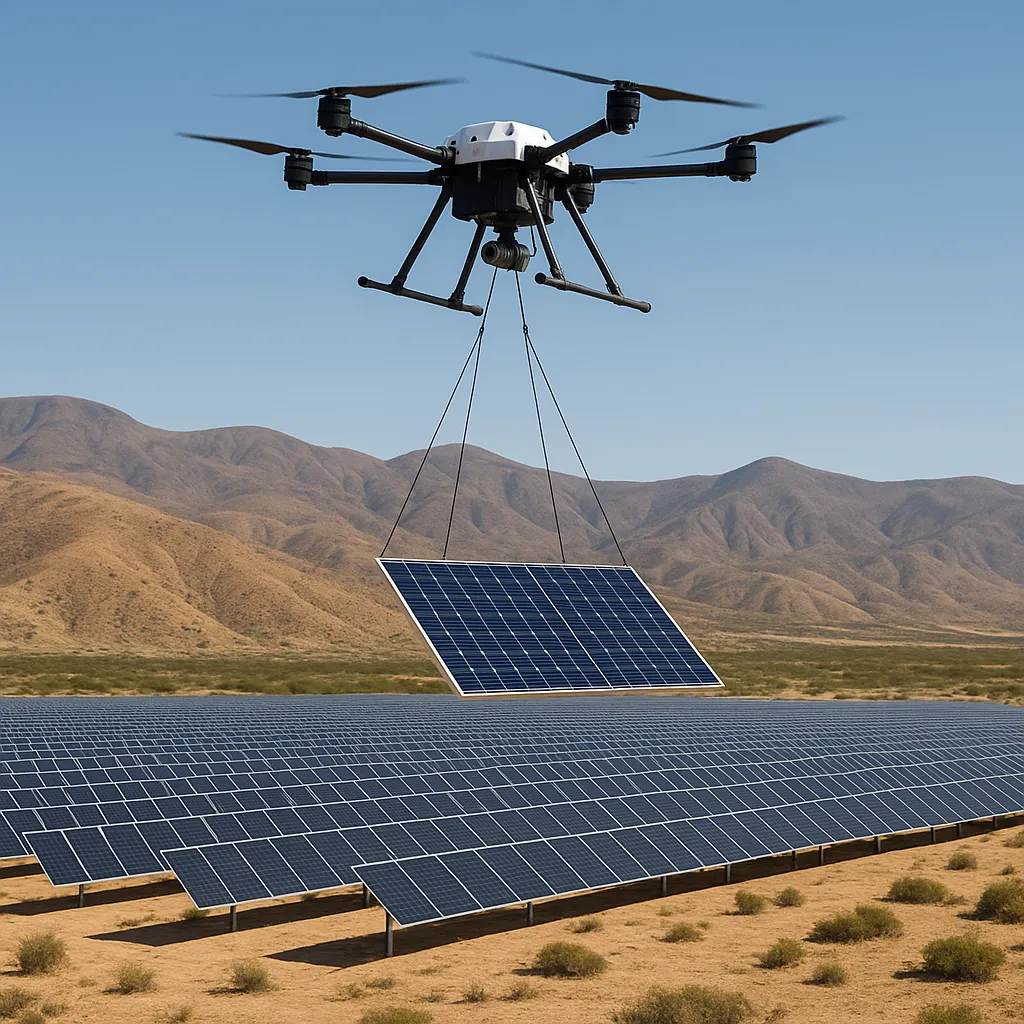
Transport of Health Goods to Remote Areas
In Africa, drones are increasingly being used to improve access to healthcare in remote areas. One of the most promising applications is the rapid delivery of blood bags. In many regions of Africa, access to safe and timely blood products is a major challenge.
Drones can fly over difficult terrain and deliver blood bags in a few hours, which is crucial for saving lives in emergency situations. For example, in Rwanda, drones are used to deliver blood products and medical supplies to rural hospitals and clinics. This initiative has significantly improved inventory management and reduced delivery times, saving many lives.
Drones can also be used to transport vaccines, medicines, and other essential medical supplies, thereby improving access to healthcare in isolated areas.
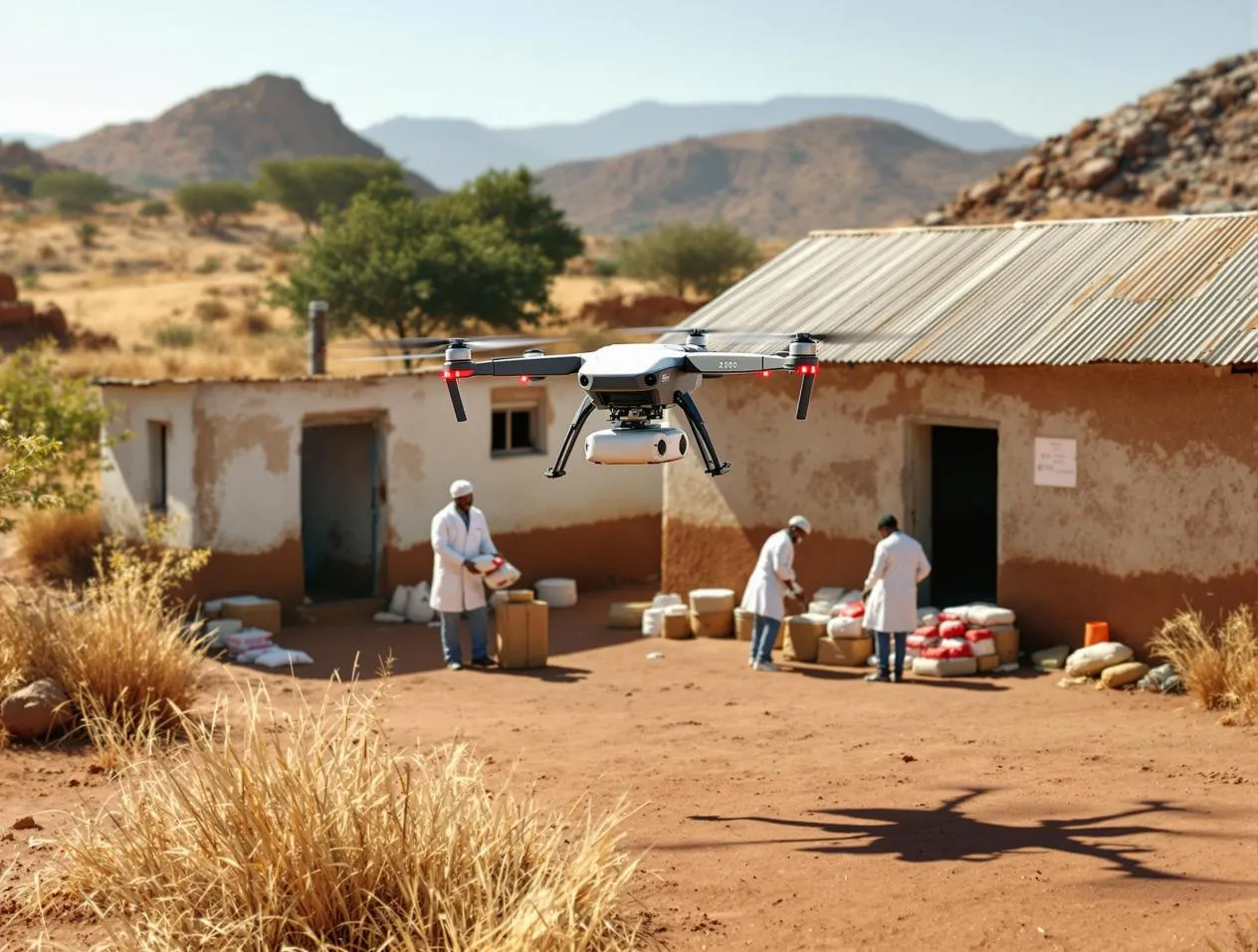
Future Development
In less than 10 years, drones have undergone rapid evolution. Technological advancements have increased their load capacity, flight autonomy, and precision. In the coming years, we can expect continuous improvements in these capabilities, paving the way for new applications in various sectors.
We can envision the use of drones not only for the construction of wind farms and the installation of solar panels but also for the construction of large buildings and complex infrastructures.
Drones will be able to be used in all sectors, especially with the development of artificial intelligence, which is making them increasingly autonomous. This autonomy will allow drones to perform complex tasks with minimal human intervention, thereby increasing their efficiency and utility.
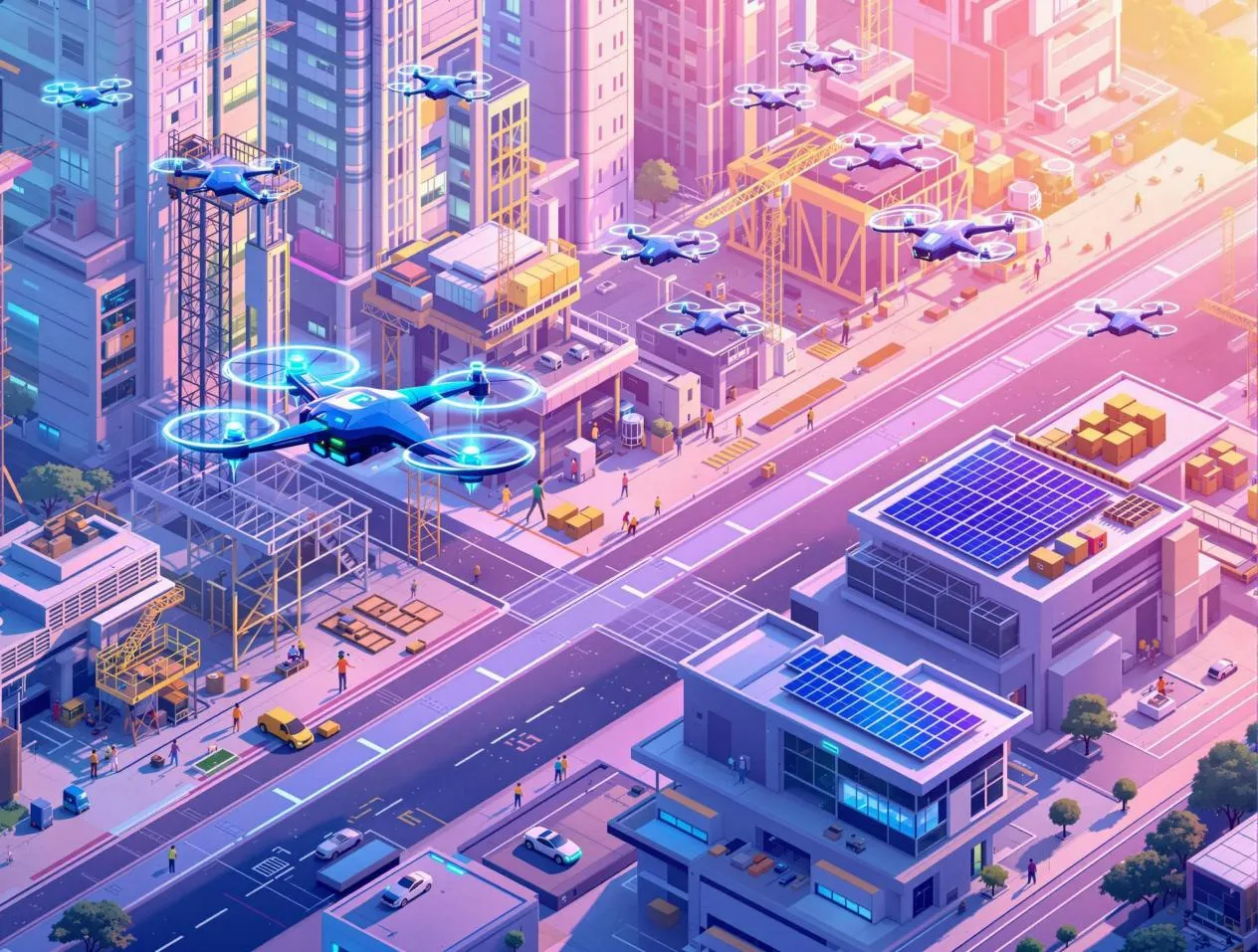
Drones represent a major advancement for construction and logistics in hard-to-reach areas. They offer an economic, ecological, and effective solution for transporting heavy goods and delivering medical supplies. With continuous technological progress, the application possibilities for drones will only expand, paving the way for new innovations in various sectors.
Drones are not simply flying machines; they have become an indispensable tool for sustainable development and improving the quality of life in remote areas. As technology continues to evolve, we can expect drones to play an increasingly important role in construction, logistics, and healthcare, contributing to a more sustainable and connected future.

Recent Posts

October 26, 2016
The Most Successful Engineering Contractor
Jun 27, 2025
UAV Training Academies
May 21, 2025
WHY INTEGRATE DRONES IN SMART CITIES?
Apr 22, 2025
WILDLIFE MONITORING AND CONSERVATION APPLICATION
Apr 09, 2025
How Drones Are Changing Disaster Response
Mar 20, 2025
How to improve border security?

